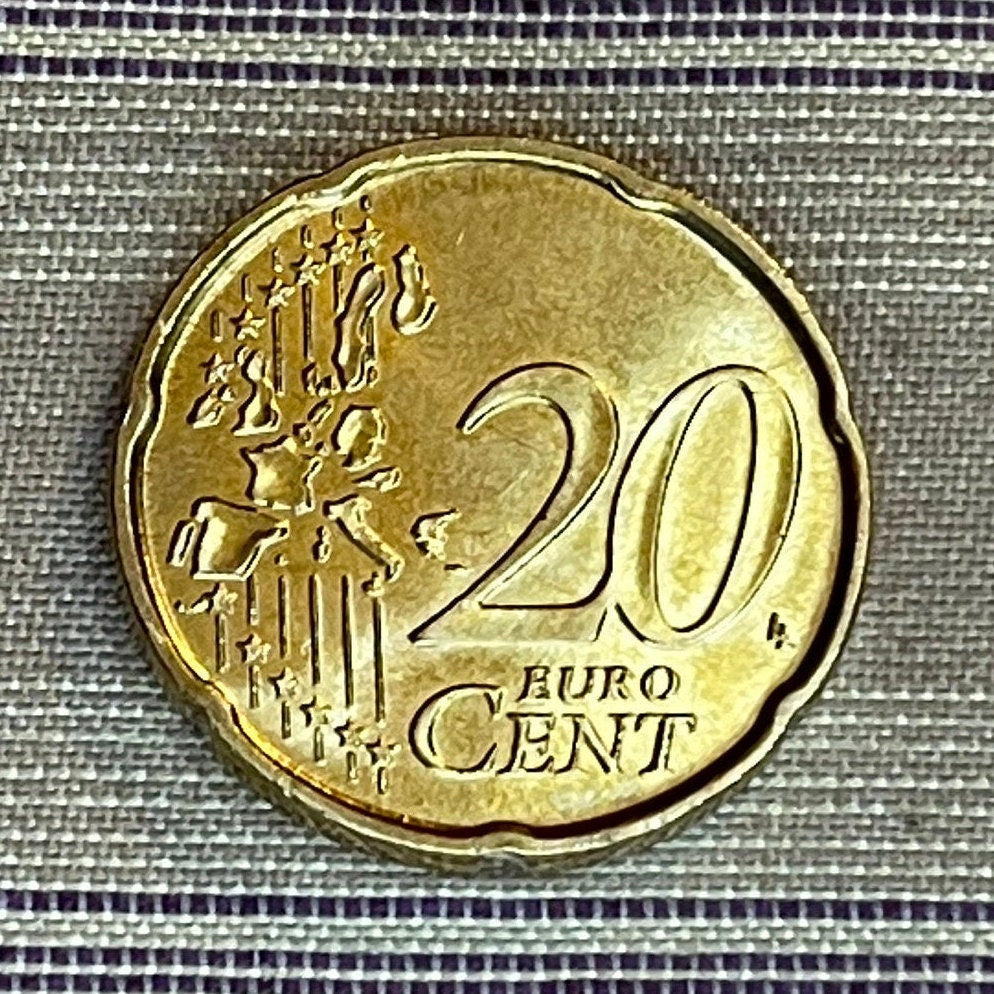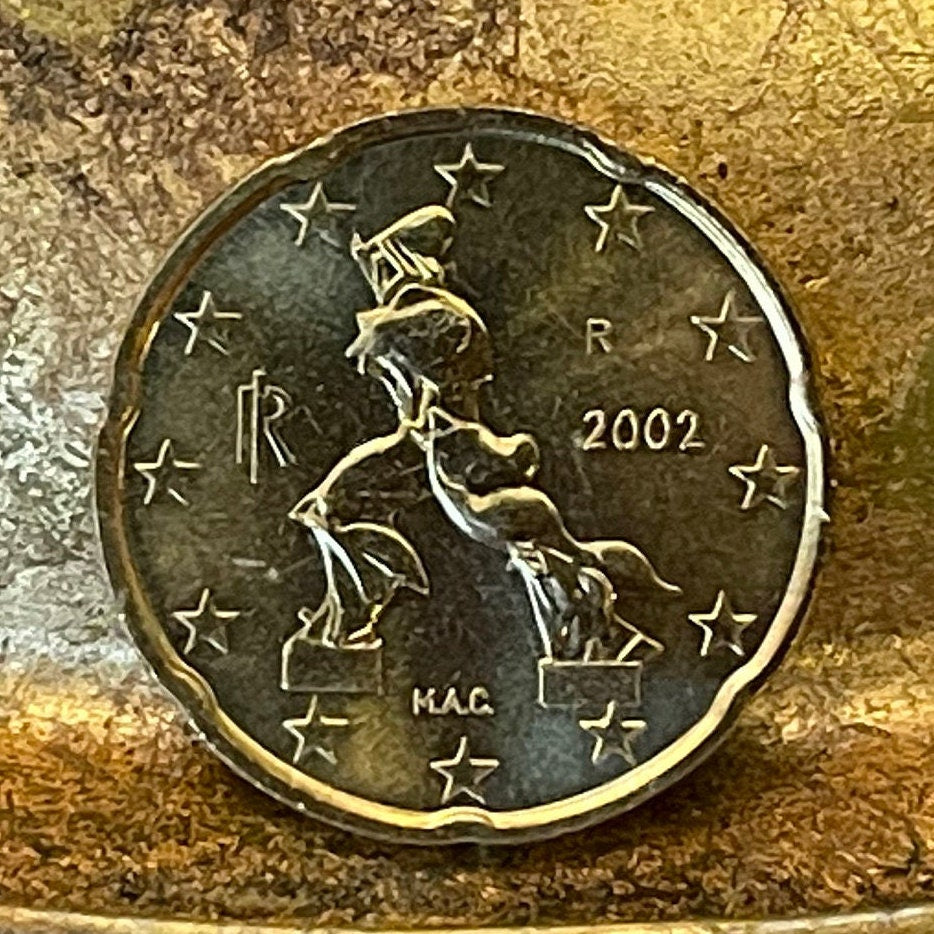elemintalshop
Futurist Sculpture "Unique Forms of Continuity in Space" 20 Euro Cents Italy Authentic Coin Money for Jewelry (Umberto Boccioni) (Marinetti)
Futurist Sculpture "Unique Forms of Continuity in Space" 20 Euro Cents Italy Authentic Coin Money for Jewelry (Umberto Boccioni) (Marinetti)
Couldn't load pickup availability
Futurist Sculpture "Unique Forms of Continuity in Space" 20 Euro Cents Italy Authentic Coin Money for Jewelry and Craft Making (Umberto Boccioni) (Marinetti)
Obverse: Boccioni's sculpture "Unique Forms of Continuity of Space", encircled by the twelve stars of Europe. On the left the monogram of Italian Republic. The mint mark and the date are at right. Author's initials are below the sculpture.
Lettering: RI
Translation: (RI) = Italian Republic
Reverse: A map, next to the face value, symbolizes the gathering of the fifteen nations of the European Union
Lettering: 20 EURO CENT
Edge: Smooth with seven indentations ("Spanish flower")
Features
Issuer Italy
Period Republic (1946-date)
Type Standard circulation coin
Years 2002-2007
Value 20 Euro Cent
0.2 EUR = 0.23 USD
Currency Euro (2002-date)
Composition Nordic gold
Weight 5.74 g
Diameter 22.25 mm
Thickness 2.14 mm
Shape Round
Orientation Medal alignment ↑↑
Number N# 133
References KM# 214, Schön# 232
Wikipedia:
Umberto Boccioni (US: /boʊˈtʃoʊni, bɒˈ-, bɔːˈ-/, Italian: [umˈbɛrto botˈtʃoːni]; 19 October 1882 – 17 August 1916) was an influential Italian painter and sculptor. He helped shape the revolutionary aesthetic of the Futurism movement as one of its principal figures. Despite his short life, his approach to the dynamism of form and the deconstruction of solid mass guided artists long after his death. His works are held by many public art museums, and in 1988 the Metropolitan Museum of Art in New York City organized a major retrospective of 100 pieces.
********
The writing of his Manifesto tecnico della scultura futurista (Technical manifesto of Futurist sculpture), published on 11 April 1912, was Boccioni's intellectual and physical launch into sculpture; he had begun working in sculpture in the previous year.
By the end of 1913 he had completed what is considered his masterpiece, Forme uniche della continuità nello spazio (Unique Forms of Continuity in Space), in wax. His goal for the work was to depict a "synthetic continuity" of motion, instead of an "analytical discontinuity" that he saw in such artists as František Kupka and Marcel Duchamp. During his life, the work only existed as a plaster cast. It was first cast in bronze in 1931. This sculpture has been the subject of extensive commentary, and in 1998 it was selected as the image to be engraved on the back of the Italian 20-cent euro coin.
Soon after Boccioni's death in 1916 (and after a memorial exhibition was held in Milan), his family entrusted them for an impermanent time to a fellow sculptor, Piero da Verona; da Verona then requested that his assistant place them in the local rubbish-dump. Marinetti's outraged account of the destruction of the sculptures was slightly different; in his memoirs, he stated that the sculptures were destroyed by workmen to clear the room the "envious passèist narrow-minded sculptor" had placed them. Thus, much of his experimental work from late 1912 to 1913 was destroyed, including pieces relating to contemporaneous paintings, which are known only through photographs. One of the few surviving pieces is the Antigrazioso (Anti-Graceful, also called The Mother).
In 2019, the Estorick Collection of Modern Italian Art held an exhibition reconstructing several of the destroyed sculptures.
Share



















